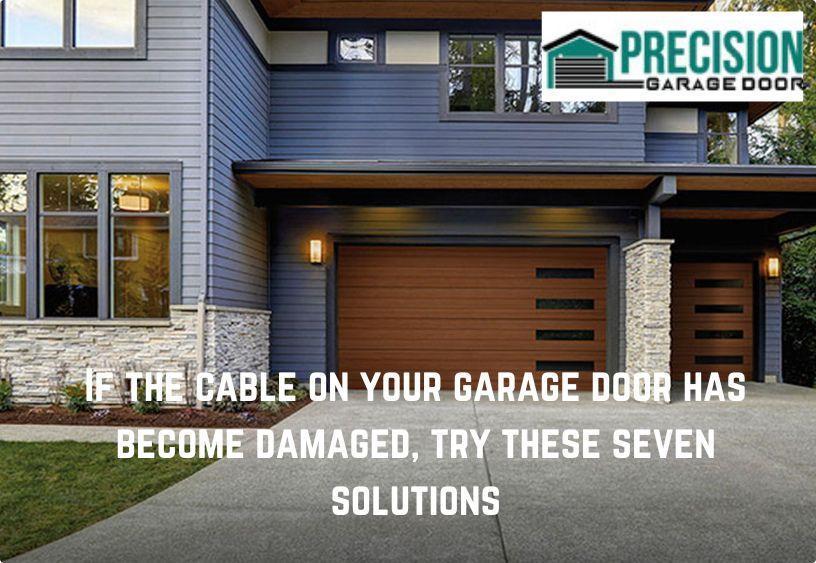
19 Oct If the cable on your garage door has become damaged, try these seven solutions
Garage doors are typically the heaviest and largest exterior doors. It’s not uncommon for garage doors to weigh more than 500 pounds. Here are some pointers that will assist you in safely mending, Garage door motor replacement, reconnecting, or rewinding your garage door’s wires.
What You Should Know Before Attempting a Cable Repair on Your Garage Door
Knowing the different types of cable systems and how they work is essential before attempting to repair the wires on a garage door. A garage door’s illumination might be one of two types of wire systems, both of which are meant to increase safety during use. The first is a torsion spring-operated cable, while the second is an extension spring-operated system.
Motorized via Torsion Springs Cables
Torsion springs are commonly installed horizontally on the header above the garage door opening. It’s a long bar with a pair of high-tension springs looped around it and a pair of roller drums with grooves attached to it at either end.
Cable Extenders with Spring-Loaded Limiters
Traditionally, extension springs have only been utilised in low-ceilinged garages where a torsion system couldn’t be installed. Extension springs, on the other hand, have become more common in the past two decades due to their lower cost and higher safety profile during Garage door installation.
Security Cables
Safetly cables are routed through the extension springs and fastened to the door track’s supporting structure. They don’t limit the spring’s motion in any way, but hold it in place in case the door cable or the spring gives out. The sole purpose of this device is to prevent harm from happening to its users.
Recommendations for Fixing a Broken Garage Door Cable
Due to their bulky design and numerous moving parts, garage doors are notoriously challenging to repair. Lifting the door and stopping its descent while shutting are made possible by the passage of energy from the coiled springs through the wires.
Check out the cable and wire
In order to lessen the likelihood of damage or injury, it is important to inspect the lift cables on a regular basis. Garage door cable replacement must be done before they break. If the cables sag or appear loose while the door happens to be fully open.
Close and lock the door
Pay note to where the door is when the cable snaps or releases, as that will effect the next steps. If the door is open at all, or if it is just partially open, attach a C-clamp to the track under the bottom wheel. Do this even if the door is only slightly ajar.
The Door Must Be Opened
To make the procedure of removing or reattaching cables simpler, the door will need to have its hinges fully opened before the force on the torsion or extension springs can be removed. Raise the door until it’s completely open, then clamp it into place so it doesn’t fall back.
Verify the condition of the Springs
Extension or torsion springs are vulnerable to damage when a cable snaps and the resulting shockwave of energy hits the spring. Any broken or cracked springs should be replaced immediately. Tightening and rewinding the torsion spring may be necessary to fix the problem of loose cables, which was likely caused by the spring’s slippage.
Make sure you’re using the right tools for the job
C-clamps, blocks, and clamps must be used on both tracks to secure the door and prevent it from moving while garage door install is done. Use a ladder or step stool instead of stretching to reach something above chest level; doing so is safer and provides more physical support for the tasks at hand.
Expert service specialists have the specialised knowledge, training, and experience necessary to repairs garage door lift cables. They can put in, maintain, and fix any type of garage door, including ones that slide up and down, ones that swing in and out, and ones that swing in and up.




